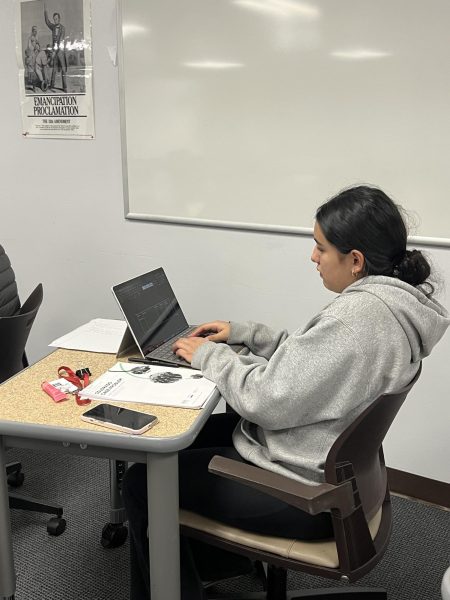Long Live The King
“The King and I” is Rodger and Hammerstein’s story of an English governess name Anna Leonowens (Brielle Pray ‘15) who taught King Mongkut’s (Kyle Butenhoff ‘14) children of Siam in the 1860’s until 1868 when King Mongkut died and his son, Chulalongkom (Schuyler Cross), became king and amicably dismissed her. The play works with the themes of custom and tradition, love, sexism, and race as well as the great cultural barriers that the King and Anna face.
The acting was very well done especially by senior Kyle Butenhoff, who played the King. It’s not an easy role to play. Yul Brynner, who played the king in the 1956 film adaptation, won an Oscar for his role. Butenhoff had a choice to play the king as either Yul Brynner or as himself. He chose to be himself and did so remarkably. His performance was very original. He was believable and had great stage presence. He was powerful, decisive, and funny.
Junior Brielle Pray starred opposite Butenhoff as Anna Leonowens, as a strong widow who is in a constant love/hate relationship with the king of Siam as they are both from different cultures and at times see the other as either a complete foe or with a good natured and an exotic curiosity. Pray’s singing was beautiful.
Together, Pray and Butenhoff had great charisma and stage presence.
Seniors Dana Mackin (Lady Thiang), Byron Gamble (Lun Tha) and Kalina Reichert (Tuptim) gave heartwarming performances and all had several musical numbers that hit the notes just right. Steven Szachara, who played Kralahome, the King’s right hand man, was also very good and amusing.
Seniors Andrew Jacobsohn and Hunter Gause entertained the audience as British royalty , who provided some nice comic relief and physical comedy.
The music by the pit band was very well done. The Sauer’s have done a magnificent job in preparing these great musicians as they did not sound one note off. It was professional and well prepared.
But what really impressed me were three things: the costumes, the third scene of the second act, and the little children as part of the play.
The costumes were very original. Most of the male actors were shirtless, and their stoic nature as they performed their roles was impressive. It is not a comfortable thing to do in public, but if they had any discomfort, they hid it well. They were confident and prepared.
I loved how Mr. Pantoja decided to portray the third scene of the second act. In the scene the King entertained British dignitaries with a Siamese representation of Uncle Tom’s Cabin called “The Small House of Uncle Thomas.” It’s a play within a play. But what the cast did was draw a white curtain across the stage with lights behind them to show shadows of different proportions of the actors or props. Technical Director and Light Designer Kate Tara ‘14 and her crew did a great job with this.
The audience can see the shadows acting out the play while hearing the choir, led by Kalina Reichert (Tuptim) narrate the story.
I was also impressed by the little children ages six to ten who were part of the play. The children came from the Joyous Chinese Culture Center and were found by Mrs. Yi Ren, the new RJHS Mandarin teacher. It was great to see young children begin their careers in theatre. It also allowed the play to feel more genuine to the audience.
Some of the actors and actresses played their roles with accents and some did not, which cut into the illusion of the realistic setting, and caused some confusion at times, but it was minimal.
Mr. Pantoja’s directorial debut was a hit. “The King and I” was impressive. I know I plan on getting front-row tickets for the Spring performance of “Life is a Dream” in the new RJHS theatre. I’ll be ready to be blown away.






